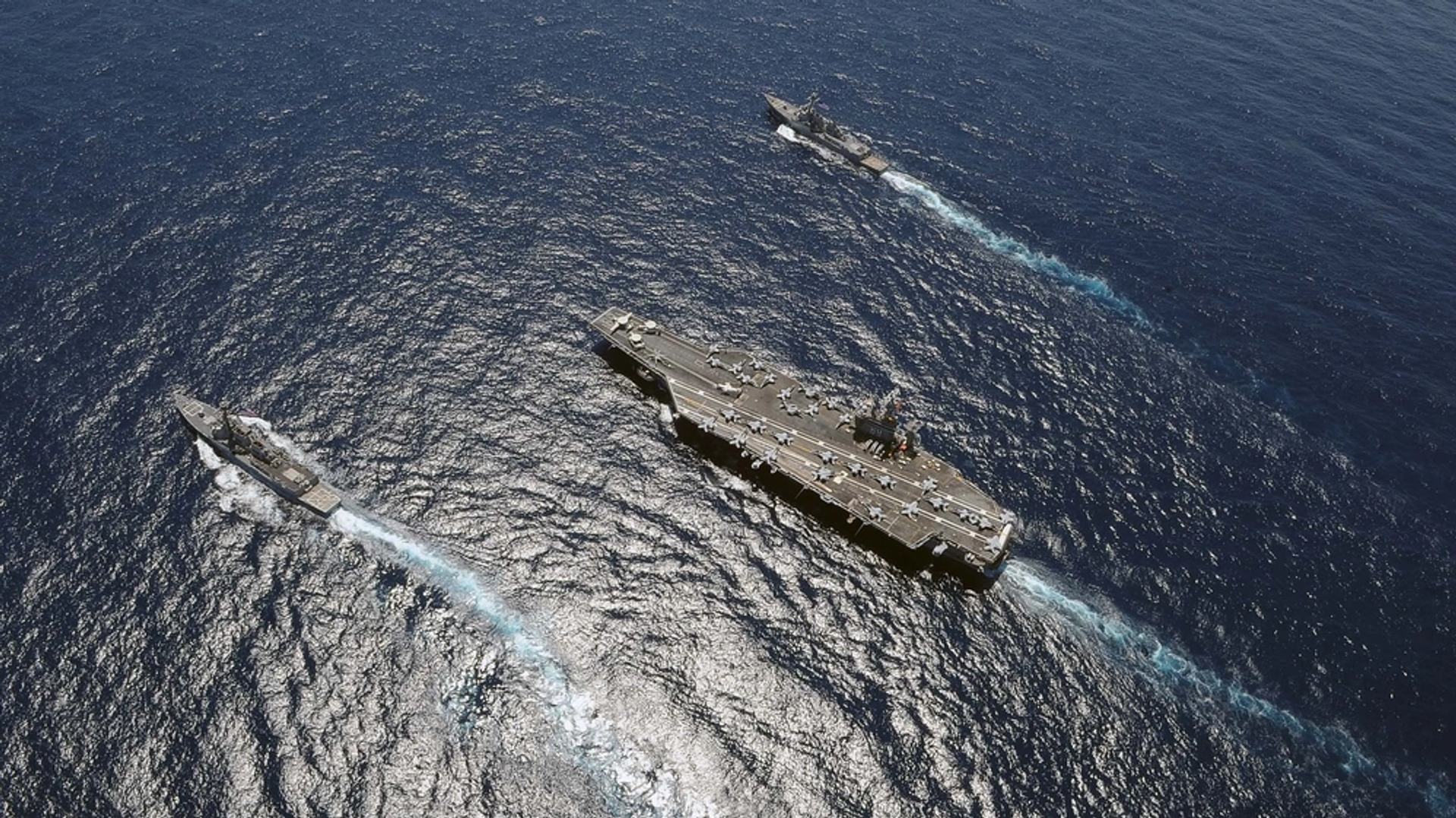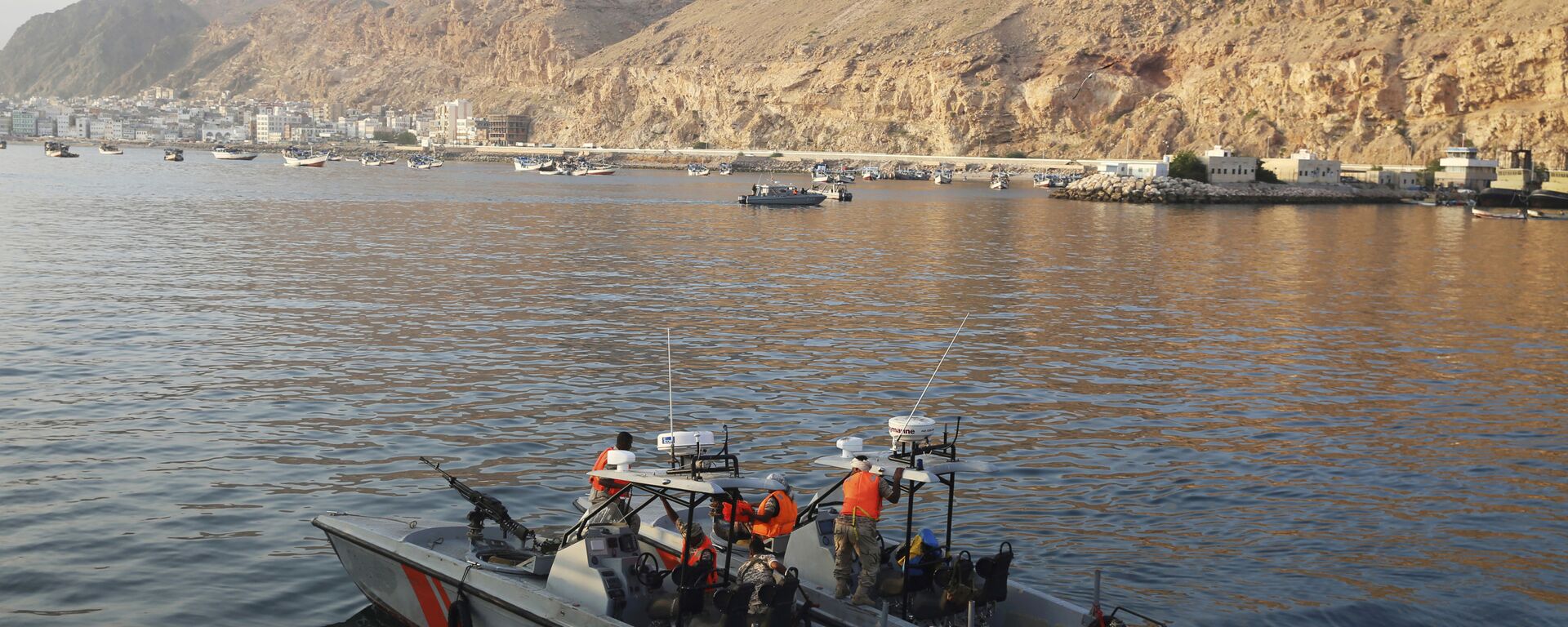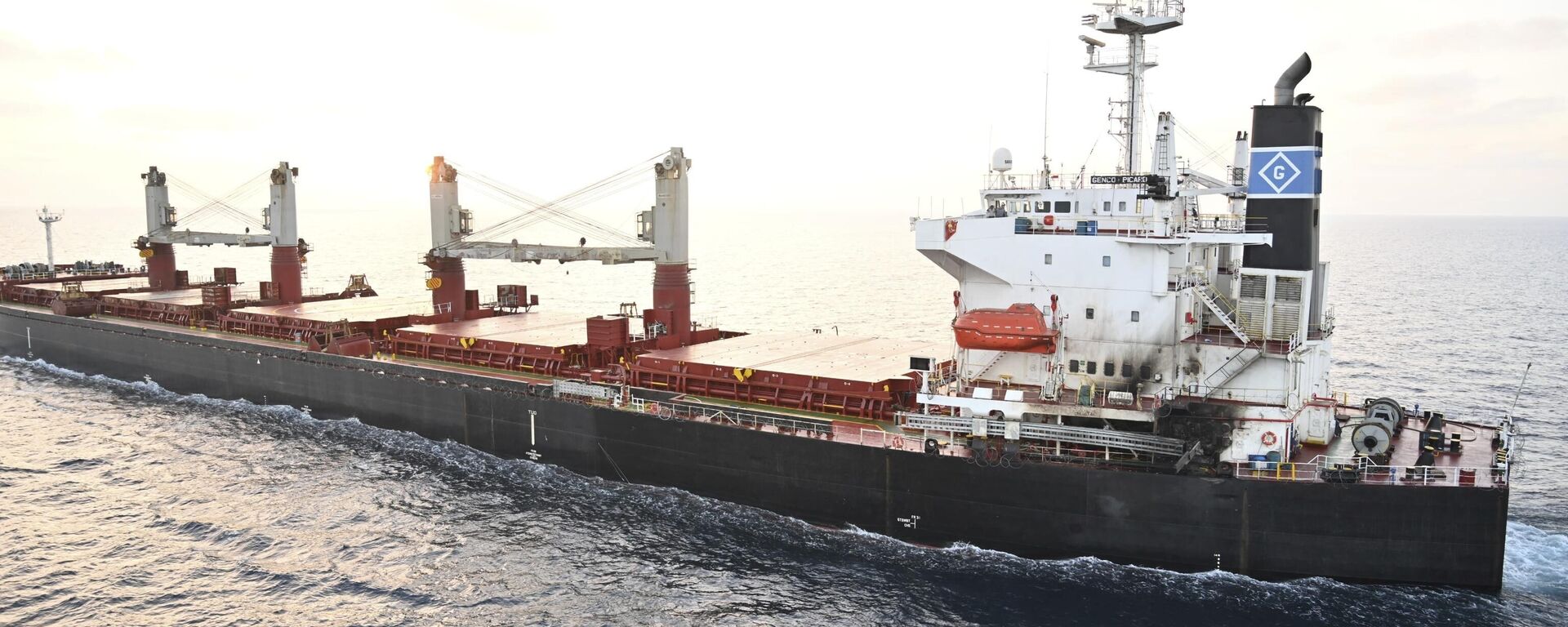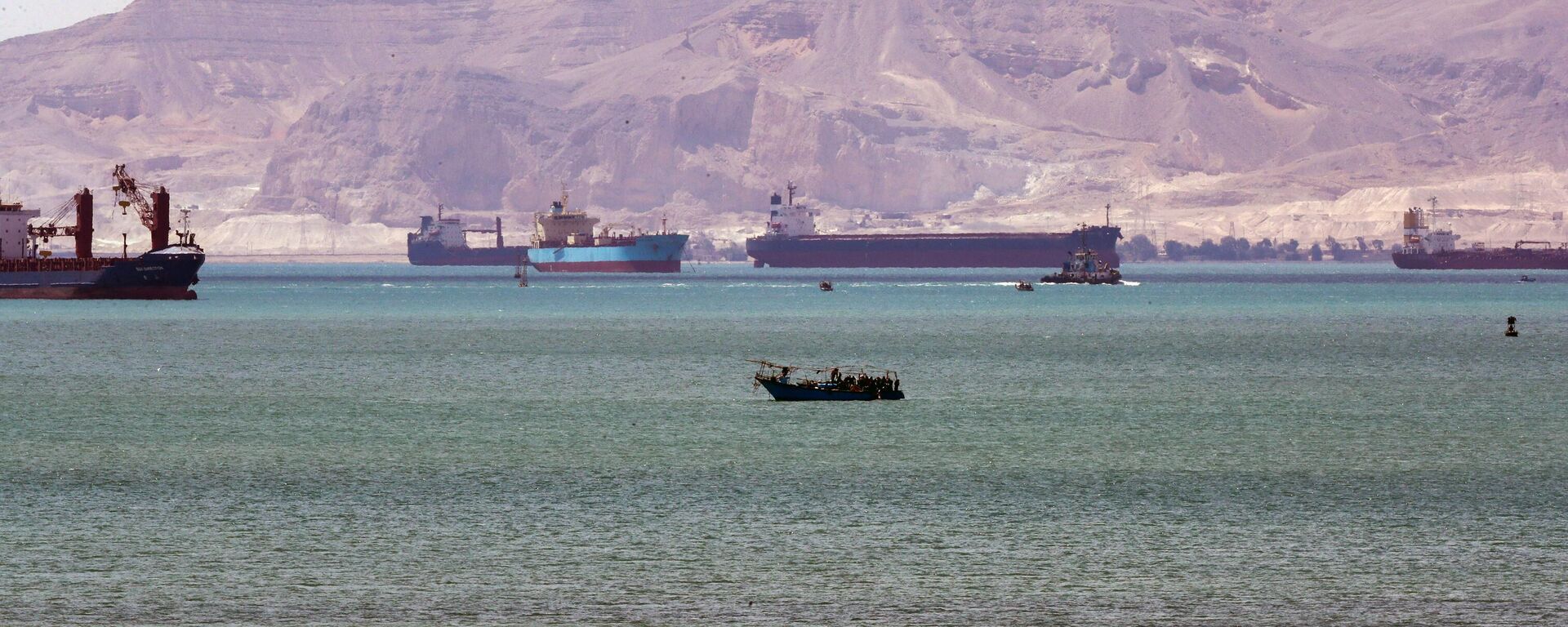https://sputnikglobe.com/20240327/humbling-a-goliath-us-led-no-fail-mission-against-the-houthis-is-failing-1117586684.html
Humbling a Goliath: US-Led ‘No-Fail’ Mission Against the Houthis is Failing
Humbling a Goliath: US-Led ‘No-Fail’ Mission Against the Houthis is Failing
Sputnik International
The US established a maritime ‘coalition of the willing’ in the Red Sea in December 2023 and began bombing Yemen in January in response to the Houthis’ bid to shut down Israeli-affiliated commercial traffic through the waterway in solidarity with Palestine. The Houthis have vowed to continue their operations until the carnage in Gaza stops.
2024-03-27T17:46+0000
2024-03-27T17:46+0000
2024-03-27T17:46+0000
world
red sea
yemen
israel
houthis
houthi
uss dwight d. eisenhower
red sea crisis
https://cdn1.img.sputnikglobe.com/img/07e8/03/1b/1117586527_0:50:999:611_1920x0_80_0_0_d7d21e12aa77461827c1d9a9e84ce579.png
The US-led military campaign in the Red Sea which the Pentagon wanted to make into a “no-fail mission” has turned into a modern-day David vs. Goliath PR disaster, with the powerful American naval and air might arrayed against the Houthis proving unable to stop militia attacks or reopen the Red Sea to shipping, US business media has reported.“The gray F/A-18 fighter jets hurtled one by one from the deck of the USS Dwight D. Eisenhower into the heat of the Red Sea morning, scrambling to counter the latest attack drone launched by the Houthis. The $56 million aircraft were part of a coalition operation that nullified the attack, returning hours later as they have almost daily for the last several months,” Bloomberg wrote in a report Wednesday highlighting the difficulties the West has faced trying to stop Ansar Allah.Rear Admiral Marc Miguez, commander of USS Dwight D. Eisenhower aircraft carrier-led American armada operating in the Red Sea, said that while the US has “reduced some” of the Houthis’ missile and drone capability through strikes, there’s no way to predict when the fleet’s “job” in the region will be done, since estimates on Houthi missile numbers are “kind of a black hole for the US intelligence-wise.”Shipping firms and companies impacted by the Red Sea crisis are even less optimistic.A Western official predicted that the Houthis will be able to continue their blockade at its current intensity for “months” to come. Others accused the Houthis of getting help from outside via Iran, including everything from weapons components to sea mine-laying specialists. Iran has “categorically” denied providing any military or weapons assistance to the Houthis.“[The Houthis] don’t create inertial navigation systems. They don’t create medium-range ballistic missile engines. They don’t create the stage separations on these medium-range ballistic missiles or the anti-ship cruise missiles,” US Central Command commander Gen. Michael Kurilla told a Senate hearing earlier this month, accusing Ansar Allah of getting help from outside, and ignoring the vast stocks of Soviet-era ballistic, cruise and air defense missile technologies which the Houthis have inherited and upgraded since 2014.Unable to stop the Houthis at sea, Western officials have rejected any talk of a ground operation against the militia, warning that if the group escalates its targeting of Western warships, the coalition may respond by assassinating Houthi leaders.An anonymous US military official told Bloomberg that the US is on the “wrong side of the cost curve” in the Red Sea campaign, whose economic costs are starting to add up.The Houthis’ campaign of ship seizures, missile and drone attacks have caused commercial traffic through the southern Red Sea to drop by about 70 percent in March compared to early December, with container shipping reportedly down 90 percent, gas tanker flow halting almost completely, and Israel’s main Red Sea port forced to lay off half of its workforce.Ansar Allah began its partial blockade of the Red Sea in November with the seizure of the Galaxy Leader, an Israeli billionaire-owned ro-ro car carrier, expanding operations to target not only Israeli, but US and British commercial vessels and warships after the pair of nations began a campaign of airstrikes against Yemen in January. Last month, the militia warned European countries setting up their own maritime security operations in the Red Sea that “any idiocy you commit will affect your ships and navigation.” Major European shipping companies including Maersk has said they would continue to avoid the Red Sea in spite of the EU’s security mission.
https://sputnikglobe.com/20240323/ship-catches-fire-off-yemen-coast-after-projectile-strike---uk-maritime-trade-authority-1117513615.html
https://sputnikglobe.com/20240319/us-flagged-vessels-in-middle-east-advised-to-turn-off-transponders-amid-houthi-threat-1117421600.html
https://sputnikglobe.com/20240327/netherlands-dispatches-frigate-to-join-security-missions-in-red-sea---defense-minister-1117585228.html
red sea
yemen
israel
Sputnik International
feedback@sputniknews.com
+74956456601
MIA „Rossiya Segodnya“
2024
News
en_EN
Sputnik International
feedback@sputniknews.com
+74956456601
MIA „Rossiya Segodnya“
Sputnik International
feedback@sputniknews.com
+74956456601
MIA „Rossiya Segodnya“
why can't us beat the houthis, what is asymmetric warfare, why can't houthis be beaten, what will us do if it can't beat the houthis
why can't us beat the houthis, what is asymmetric warfare, why can't houthis be beaten, what will us do if it can't beat the houthis
Humbling a Goliath: US-Led ‘No-Fail’ Mission Against the Houthis is Failing
The US established a maritime ‘coalition of the willing’ in the Red Sea in December 2023 and began bombing Yemen in January in response to the Houthis’ bid to shut down Israeli-affiliated commercial traffic through the waterway in solidarity with Palestine. The Houthis have vowed to continue their operations until the carnage in Gaza stops.
The US-led military campaign in the Red Sea which the Pentagon wanted to make into a “no-fail mission” has turned into a modern-day David vs. Goliath PR disaster, with the powerful American naval and air might arrayed against the Houthis proving unable to stop militia attacks or reopen the Red Sea to shipping, US business media has reported.
“The gray F/A-18 fighter jets hurtled one by one from the deck of the USS Dwight D. Eisenhower into the heat of the Red Sea morning, scrambling to counter the latest attack drone launched by the Houthis. The $56 million aircraft were part of a coalition operation that nullified the attack, returning hours later as they have almost daily for the last several months,” Bloomberg
wrote in a report Wednesday highlighting the difficulties the West has faced trying to stop Ansar Allah.
“Yet for all the costly hardware the US and its allies have thrown at the Islamist group from northwest Yemen, they haven’t been able to stop the attacks on civilian freighters and warships. As a result, the world’s biggest shipping companies are still largely avoiding a route that once carried 15% of global commerce,” the outlet lamented.
Rear Admiral Marc Miguez, commander of USS Dwight D. Eisenhower aircraft carrier-led American armada operating in the Red Sea, said that while the US has “reduced some” of the Houthis’ missile and drone capability through strikes, there’s no way to predict when the fleet’s “job” in the region will be done, since estimates on Houthi missile numbers are “kind of a black hole for the US intelligence-wise.”
Shipping firms and companies impacted by the Red Sea crisis are even less optimistic.
“It’s quite a binary situation,” Hapag-Lloyd CEO Rolf Habben Jansen explained earlier this month. “It is either safe for our people or it is not. As long as it is not safe, we will not send our people through the Red Sea.” Jansen didn’t rule out the Houthi blockade could last throughout the rest of the year and into 2025.
A Western official predicted that the Houthis will be able to continue their blockade at its current intensity for “months” to come. Others accused the Houthis of getting help from outside via Iran, including everything from weapons components to sea mine-laying specialists. Iran has
“categorically” denied providing any military or weapons assistance to the Houthis.
“[The Houthis] don’t create inertial navigation systems. They don’t create medium-range ballistic missile engines. They don’t create the stage separations on these medium-range ballistic missiles or the anti-ship cruise missiles,” US Central Command commander Gen. Michael Kurilla told a Senate hearing earlier this month, accusing Ansar Allah of getting help from outside, and ignoring the
vast stocks of Soviet-era ballistic, cruise and air defense missile technologies which the Houthis have inherited and upgraded since 2014.
Unable to stop the Houthis at sea, Western officials have rejected any talk of a ground operation against the militia, warning that if the group escalates its targeting of Western warships, the coalition may respond by assassinating Houthi leaders.
An anonymous US military official told Bloomberg that the US is on the “wrong side of the cost curve” in the Red Sea campaign, whose economic costs are starting to add up.
While the Houthis can build and launch simple ballistic and cruise missiles or drones at a cost of thousands to tens of thousands of dollars, the anti-missile interceptors US warships launch to take down militia threats are costing US taxpayers up to hundreds of thousands of dollars apiece, with F/A-18 jets costing the Navy $25,000 or more per hour to operate (not counting whatever munitions they happen to expend during their mission).
The Houthis’ campaign of ship seizures, missile and drone attacks have caused commercial traffic through the southern Red Sea to drop by about 70 percent in March compared to early December, with container shipping reportedly down 90 percent, gas tanker flow halting almost completely, and Israel’s main Red Sea port forced to lay off half of its workforce.
Ansar Allah began its partial blockade of the Red Sea in November with the seizure of the Galaxy Leader, an Israeli billionaire-owned ro-ro car carrier, expanding operations to target not only Israeli, but US and British commercial vessels and warships after the pair of nations began a campaign of airstrikes against Yemen in January. Last month, the militia
warned European countries setting up their own maritime security operations in the Red Sea that “any idiocy you commit will affect your ships and navigation.” Major European shipping companies including Maersk has said they would continue to avoid the Red Sea in spite of the EU’s security mission.





